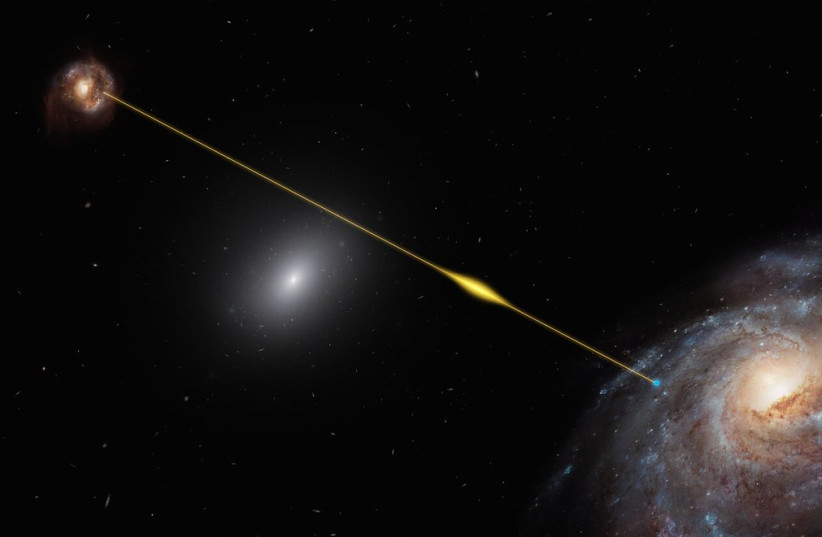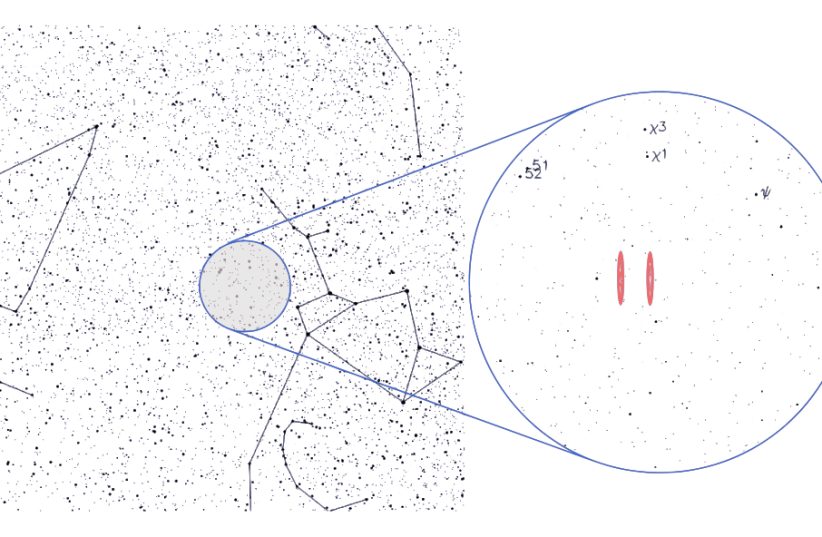Are aliens calling? Scientists find 8 suspicious radio signals in space - study
An AI algorithm was used to sift through 820 star systems to find radio signals that could have been made by intelligent alien life.
Eight new strange extraterrestrial radio signals have been detected by scientists and they could possibly be linked to alien life somewhere in the universe, according to a recent study.
8 Candidate Alien Signals From 5 Stars Found by AI Algorithm with Dr. Cherry Ng and Peter Ma
The findings in question were published in the peer-reviewed academic journal Nature Astronomy.
The study was the result of artificial intelligence-powered research using the Green Bank telescope to study signals from 820 different star systems as part of the Breakthrough Listen project, run and founded by Israeli billionaire Yuri Milner as part of the Breakthrough Initiatives.
Are we alone? What alien signals have scientists found?
There are numerous examples of extraterrestrial radio signals that scientists have detected over the years. These are important as radio signals have often been prioritized by scientists as one of the most prominent aspects of SETI (search for extraterrestrial intelligence).
The reason for this is that, aside from the fact that radio signals are a possible means of communication, the technology to create them would likely have a specific marking known as a technosignature, which in turn would mean someone had used technology to create them.

Considering how space is filled with radio signals created from any number of natural phenomena, finding a way to distinguish the natural from the man-made (or rather, alien-made in this case) is important.
"The detection of an unambiguous technosignature would demonstrate the existence of extraterrestrial intelligence."
Study findings
One way of doing this is by seeing the range of frequencies.
Human communication and radio signals, for example, are typically referred to as broadband. This means the signal has a wide range of frequencies that can be transmitted simultaneously through a bunch of different media, such as fibers, satellites, radio waves, cables and so on.
By contrast, the signals SETI scientists are on the lookout for are narrowband, which has a much more narrow range and is usually on the order of around just 1 Hz. These are very easily distinguishable from natural astrophysical phenomena, so that's why finding a technosignature for narrowband radio signals in space is so important.
As the study itself says, "The detection of an unambiguous technosignature would demonstrate the existence of extraterrestrial intelligence."
This also is important for distinguishing genuine extraterrestrial radio signals from human-made radio signals, a confusion that unfortunately happens quite often.
Like finding a needle in a haystack
But with so many signals that could happen, how can scientists possibly sift through all of them to try to find a possible alien transmission?
Well, it turns out, scientists found the answer: Don't. Instead, let AI do it for you.
That's exactly what the researchers behind this study did, utilizing an AI algorithm to look through signals from a designated 820 different star systems. These targets were made from the Hipparcos catalogue, a collection of data from 118,200 stars made by the European Space Agency's (ESA) Hipparcos satellite, and totaled over 480 hours of data.
The AI then had to sift through everything and eliminate false positives while looking for technosignatures.
In the end, there were eight promising signals found that hadn't been detected before.
These signals all come from five different stars, each within 30 to 90 light-years of Earth. One of these stars, HIP 62207, is a G-type star, which is the same type of star as the Sun.
This means that it is theoretically possible for there to be life there, in the sense that it is possible for a G-type star to support life, as our own does.
But to be sure, the researchers went to observe each of the five targets again. However, these eight signals weren't seen again.
Why couldn't they find the signals again?
The researchers behind the study aren't sure. All they can tell is that, regardless of where these signals came from, they aren't coming consistently. This by no means rules out possible alien intelligence, since humanity has only sent a few radio signals with the goal of reaching an advanced alien civilization. As such, it is possible that another intelligent race could have done something similar and only sent a few signals.

Is there precedence? Consider: The Wow! signal
One of the most famous examples of an alien radio signal is the Wow! Signal, detected in 1977 by the Big Ear radio telescope at Ohio State University.
The signal, which was detected over a period of 72 seconds (that was as long as the telescope was capable of observing, and it likely lasted longer), was then noticed by astronomer Jerry R. Ehman who, when looking over the printout of the data, circled the signal, noted by the sequence 6EQUJ5 and famously wrote "Wow!" next to it.
The sequence in question does not refer to any message broadcast in the signal but merely referred to the intensity variation.
As was the case with these new eight signals, any attempt at detecting the Wow! Signal again has failed.
Having said that, scientists have still tried to find a point of origin, with one study from 2022 claiming it could have gone from a G-type star in the Sagittarius constellation.
At the time, this claim made waves throughout the SETI community, but one leading scientist exercised caution in a statement that still could apply to the eight newly discovered signals.
"Science is about the reproducibility of results," Israeli-American astronomer Prof. Avi Loeb of Harvard University and the Breakthrough Initiatives explained to The Jerusalem Post at the time.
"The Wow! Signal did not repeat and hence it is difficult to infer its origin. There are suggestions that it was human-made. We need to find more signals of this type before associating likely explanations."



No comments:
Post a Comment